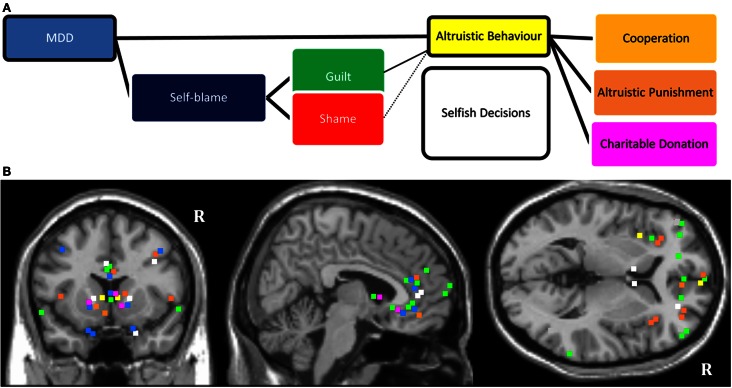Figure 2.
(A) Schematic diagram showing influence of MDD on altruistic behavior. The model considers the impact of the mood state along with abnormally elevated self-blaming feelings (guilt and shame). The proposed model also considers different types of altruism, such as cooperation, altruistic punishment, and making donations. (B). Mapping of MNI coordinates of the peak region of activations of the reviewed neuroimaging literature. The studies which were included were not selected based on a systematic review of the literature. The color coding refers to the colors in (A) (e.g., green marks specifying activations selective for guilt). “R” denotes right hemisphere. There may be slight distortions when converting 3D images onto 2D T1 structural anatomical template. All mapping remains accurate within structural neuroanatomical label of the regions. Reviewed evidence suggests that frontopolar, ventromedial, right dorsolateral PFC; dorsal and subgenual ACC, striatum and amygdala are important regions of interest (ROIs) for studying affective disturbances and social-economical decision making in MDD.

